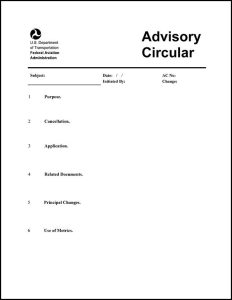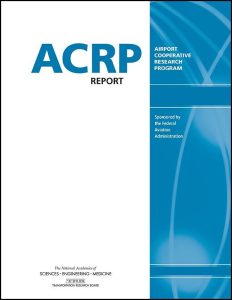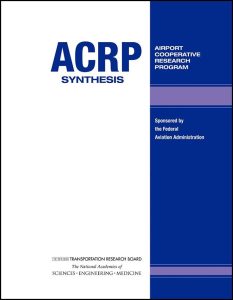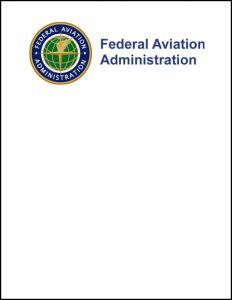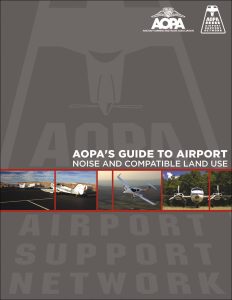To narrow the library of airside resources, use the filter boxes or airport map below or search box above.
Click an item below to expand.
Resources Matching Your Search
2013
This advisory circular (AC) provides guidance for engineers, airport managers, and the public about the design and construction of airport surface storm drainage systems, and subsurface drainage systems for paved runways, taxiways, and aprons. This AC was developed in collaboration with the Department of Defense (DOD) and incorporates the DOD Unified Facilities Criteria (UFC) draft document, Surface Drainage Design. Content includes surface hydrology; pavement surface drainage, culvert, channel, and storm drain design; drainage structures; stormwater control facilities; pipe selection bedding, and backfill, guidelines for design in the arctic and subarctic; water quality considerations and design computer programs.
2013
ACRP Report 99 provides a step-by-step process for identifying, selecting, and implementing technologies to treat stormwater that has been affected by applied deicing materials. The report addresses the processes for identifying the various drivers for deicer treatment and for evaluating the appropriateness of various treatment technologies to meet an airport's specific needs. The report also provides recommendations for the design, operation, and maintenance of each treatment technology.
2020
ACRP Research Report 14, second edition, explores a wide array of practices designed to provide for the practical, cost-effective control of runoff from aircraft and airfield deicing and anti-icing operations. This second edition has been updated to reflect the latest industry practices. The report will be of particular interest to airport industry practitioners, including airport and aircraft operators, consultants, and regulators.
2017
ACRP Research Report 174 defines and discusses green stormwater infrastructure (GSI) management strategies, a relatively new approach to regulation compliance. As more airports are proactively incorporating sustainable practices in all aspects of their operations, federal and state regulatory agencies are promoting GSI strategies to comply with water regulations and requirements. Volume 1 is written for airport managers, planners, and engineers seeking to understand stormwater management and GSI compliance with regulatory standards and requirements, along with other benefits.
2017
ACRP Research Report 174 defines and discusses green stormwater infrastructure (GSI) management strategies, a relatively new approach to regulation compliance. As more airports are proactively incorporating sustainable practices in all aspects of their operations, federal and state regulatory agencies are promoting GSI strategies to comply with water regulations and requirements. Volume 2 assists airport staff with evaluating the applicability of a GSI strategy and selecting an appropriate GSI strategy.
2009
ACRP Synthesis 17 explores practices that airport sponsors and FAA planners and environmental specialists have used to integrate airport planning efforts and the FAA's environmental review processes.
2020
This desk reference provides explanatory guidance for environmental impact analysis performed to comply with Council on Environmental Quality (CEQ) Regulations for Implementing the Procedural Provisions of the National Environmental Policy Act (CEQ Regulations) (40 Code of Federal Regulations (CFR) parts 1500-1508); U.S. Department of Transportation (DOT) Order 5610.1C, Procedures for Considering Environmental Impacts; and Federal Aviation Administration (FAA) Order 1050.1F Environmental Impacts: Policies and Procedures.
2013
ACRP Report 86 explores a protocol for evaluating and optimizing aircraft departure procedures in terms of noise exposure, emissions, and fuel burn. An accompanying CD-ROM contains a spreadsheet-based Departure Optimization Investigation Tool (DOIT) that allows users to understand and test tradeoffs among various impact measures, including noise levels, rate of fuel consumption, and emissions.
2019
This advisory circular (AC) provides information on community/public involvement in airport planning. This AC is intended to advise airport sponsors, planners, and the public on the benefits of early public participation in airport planning, and the methods by which this participation may be achieved.
2015
This advisory circular (AC) provides guidance for the preparation of master plans for airports that range in size and function, from small general aviation to large commercial service facilities. The intent of this AC is to foster a flexible approach to master planning that directs attention and resources to critical issues. The scope of each master plan must be tailored to the individual airport under evaluation.
2019
The FAA Reauthorization Act of 2018 stated that the FAA administrator, no later than October 2021, in coordination with the administrator of the Environmental Protection Agency, aircraft manufacturers, and airport operators, shall not require the use of fluorinated chemicals in aqueous film-forming foam (AFFF). This provision does not impact the current use of fluorinated foams. This program guidance letter (PGL) provides background on the FAA's research into non-fluorinated foams for use by aircraft rescue and firefighting.
2015
ACRP Report 125, and the accompanying CRP-CD-159, Bird Strike Risk Analysis and Stormwater Management Decision Tool, provide valuable advice to help airports identify and evaluate stormwater management and bird mitigation practices. The tool uses FAA's familiar safety management system approach to assess potential risks to minimize hazards posed to aviation by birds attracted to bodies of water as well as to evaluate alternative stormwater management options. The report and tool can be used to foster interaction between airport industry practitioners and environmental regulators and help them reach implementable solutions that meet their respective objectives and missions.
2019
ACRP Report 16, second edition, is designed to help airport practitioners, owners, operators, managers, and policymakers of small airports, who may have varying degrees of experience and backgrounds, to fulfill their responsibilities in such areas as financial management, oversight of contracts and leases, safety and security, noise impacts, community relations, compliance with federal and state obligations, facility maintenance, and capital improvements. The first edition has been edited and reformatted for currency, relevance, and usability and updated with additional information and new subject areas (e.g., unmanned aircraft systems, geographic information systems, digital notices to airmen, social media, and federal and state obligations). Also, hyperlinks to many of the documents and resources mentioned in this report, such as ACRP publications, industry sources, and sample checklists, have been collected into ACRP WebResource 6: Resources for Managing Small Airports.
2017
ACRP Research Report 173 explores the potential environmental and health impacts of per- and polyfluoroalkyl substances (PFASs) typically found in aqueous film-forming foams (AFFFs). The report describes methods that can be used to identify areas of potential concern at an airport and ways to implement management and remediation practices. To help airports identify areas of potential environmental concern, the research team developed the Managing AFFF and PFASs at Airports (MAPA) Screening Tool.
2019
ACRP Research Report 208 provides guidelines on using benefit–cost analysis (BCA) to identify, evaluate, and select airport stormwater management projects. Many airports undertake stormwater projects to accommodate facility expansion, address obsolescence, and respond to evolving regulatory requirements. Often, stormwater infrastructure is installed or upgraded on a project-by-project and piecemeal basis, resulting in mismatches of sizes, material types, ages, and conditions. When airports are considering expanding or improving their stormwater facilities, the immediate need for stormwater infrastructure modification may not be clear, and a BCA is needed. The report will be particularly helpful for small airports that may not have BCA expertise or experience with innovative stormwater projects.
2006
This booklet is intended as a guide in the understanding of the issues, rules, procedures, and policies applicable to airport noise and compatible land use planning.
2021
Due to the danger oil spills cause to public health and the environment, every effort must be made to prevent oil spills and to clean them up promptly once they occur. The purpose of the Spill Prevention, Control, and Countermeasure (SPCC) rule is to help facilities prevent a discharge of oil into navigable waters or adjoining shorelines. The SPCC rule requires facilities to develop, maintain, and implement an oil spill prevention plan, called an SPCC Plan. These Plans help facilities prevent oil spills, as well as control a spill should one occur.
2007
This advisory circular (AC) provides guidance to airport sponsors that develop environmental management systems (EMS). It provides guidance to airport sponsors on the needed parts of an EMS.
2017
ACRP Research Report 166 provides a set of tools that operators of airports of varying sizes can use to understand, diagnose, and interpret airport water quality. This guidebook addresses water leaving the airport that does not go to an off-site treatment facility. Accompanying the report are tools to assist practitioners diagnose root causes and possible sources of specific problems that may require attention or mitigation: an editable Field Data Collection Form, a water quality data analysis tool, a customizable parameter fact sheet database, and an implementation presentation geared toward stakeholders.
2016
ACRP Research Report 169 describes the environmental regulations and permitting programs to which airports may be subject in their management of stormwater and other types of water resources. It covers governing federal programs; stormwater discharges associated with industrial activities, construction activities, and municipal separate storm sewer systems; process water or wastewater treatment discharges; industrial wastewater pretreatment discharges; and other relevant permit programs.
